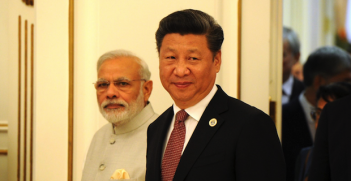What’s Next After Australia’s Trade Deal with China?

The landmark China-Australia Free Trade Agreement (ChAFTA) has been signed, sealed and delivered; it marks the start of growth for the Australian economy and a future of increased global trade liberalisation.
The landmark China-Australia Free Trade Agreement (ChAFTA) has been signed, sealed and delivered, completing a trifecta of trade deals since last year with Australia’s three Northeast Asian neighbours — China, Japan and South Korea.
China was already Australia’s largest economic partner. Japan and Korea were Australia’s second and fourth largest trading partners before those respective deals — as should be expected, given their proximity to Australia, resource deficiency and their economic weight. So these deals act to strengthen the economic relationships and bring further gains. The Australia-China agreement is set to deepen and broaden between the two countries.
The importance of the China deal is that it removes discrimination that China and Australia had introduced into the bilateral relationship through other trade agreements. Farmers from New Zealand have been enjoying preferred access to the Chinese market at the expense of Australian farmers (and Chinese consumers!) and Australia has had lower barriers to trade and investment with American, Southeast Asian and more recently Japanese and Korean partners.
ChAFTA removes barriers to trade for goods and services and liberalises investment. Up to 85 per cent of Australian exports will enter China tariff-free, increasing to 95 per cent within a decade. The major barriers were in agriculture, where there were tariffs of close to 20 per cent on beef, dairy, wine and pork. These will now be phased out. Rice and sugar were excluded from the agreement, a practice that has become commonplace in these sorts of deals.
Australian service providers will be able to enter some sectors in China that were previously closed to foreign competition, and will have better market access to other sectors. Chinese reformers are using liberalisation of healthcare services, financial services and other services in ChAFTA to further the domestic reform and liberalisation of the services sector more broadly. The Chinese government has said the agreement has the highest level of overall trade and investment liberalisation of all its agreements.
Australia already has low barriers to trade, but has 5 per cent tariffs on imports of a number of manufactured goods. Chinese exports to Australia will see many of those removed and Chinese electronics and whitegoods will be cheaper in Australia. The agreement also allows temporary Chinese workers into Australia. It makes sense to have increased mobility of workers across borders, but this should be done with clear rules and in a manner that is consistent with Australia’s rules for temporary workers from all other countries.
Liberalisation of Chinese investment into Australia is one of the most important aspects of the agreement. Australia is China’s second largest investment destination after Hong Kong, and until recently was its largest. Prior to ChAFTA, American, New Zealand, Chilean, Japanese and Korean investors had preferential rules applied at the expense of investment from elsewhere, including China. The playing field has now been levelled, with Chinese investors enjoying the same treatment as the other preferred partners with a quadrupling of the screening threshold to close to $1.1 billion for privately owned investments before they are required to be examined by the Foreign Investment Review Board. Most investment in real estate and agriculture will continue to be screened as it has lower thresholds, and all investment by state-owned enterprises will require FIRB screening.
Investment from SOEs and investment into real estate and agriculture will only become larger as Chinese investment grows and capital looks for higher returns. ChAFTA did not produce any breakthroughs in managing that aspect of the relationship which has already caused anxiety among some in the Australian community. That is an obvious area for more work between Australia and China.
A potentially complicating element is that the investor-state dispute settlement (ISDS) mechanism included in the agreement allows Chinese firms to sue the Australian government (and Australian firms to sue the Chinese government), giving some foreign firms an avenue for appealing policies and regulation beyond that afforded to domestic and most other foreign firms by the domestic legal system.
What’s next for Australian trade policy?
The Australian government has made clear its next priority is a bilateral deal with India. Thinking beyond the next large country to negotiate a deal with, there are two important and related areas that should be a priority.
First, the liberalisation that Australia has undertaken towards its trade agreement partners needs to be extended to all other partners. The greatest gains from liberalisation came in the 1980s and 1990s, when trade barriers were removed unilaterally. The principle of unilateral reforms and liberalisation is just as important when applied to today’s main barriers to trade and commerce: regulatory barriers around investment and services trade, and non-tariff measures that still impede merchandise trade.
Keeping different investment screening thresholds and 5 per cent tariffs and other protections as negotiating coin for future trade agreements (for whom are we keeping these concessions now?) makes no sense. It’s in Australia’s interest to remove the remaining discriminatory barriers that distort and divert trade.
Second, the time has come to introduce coherence to all the bilateral agreements. Trade and commerce is not confined to bilateral channels, with supply chains driving the dynamism in contemporary international trade. Reducing bilateral barriers helps but these preferential deals introduce additional barriers to commerce with other countries (through complicated rules of origin). We should be making it easier for Australian firms who want to expand into Japan, for example, to also operate from elsewhere in Asia as they move into the Japanese market.
An Australian and Asian policy priority now is an ambitious outcome in the Regional Comprehensive Economic Partnership (RCEP) — the megaregional deal that includes the ten ASEAN members plus Australia, China, Japan, India, New Zealand and South Korea. The fact that the US-led Trans-Pacific Partnership (TPP) does not include some the region’s most important economies, such as China, India and Indonesia, highlights the importance of progress on RCEP, which has the potential to bring some coherence to the overlapping agreements in Asia, as well as scope for entrenching economic cooperation (a core pillar of RCEP) which, if done right, will leverage the benefits of negotiated outcomes.
These priorities are consistent. Instead of keeping remaining barriers for negotiating coin in RCEP, removing barriers unilaterally can contribute to the momentum of regional liberalisation— while boosting Australian living standards through access to cheaper imports and creating a more competitive economy. RCEP can lift regional incomes through deeper economic interdependence as well as serving as a vehicle for regional political cooperation..
As all the economic modelling demonstrates, the gains from bilateral preferential trade agreements are not large. These agreements have impact when they are leveraged to promote domestic reform and trigger broader trade and investment liberalisation. Chinese policymakers have mastered this strategy. Australia’s recent successes are a start, and now is the time to think big and leverage the gains that have been made into much more.
Shiro Armstrong is Co-Director of the Australia-Japan Research Centre at the Crawford School of Public Policy at The Australian National University and Editor of the East Asia Forum. It can be republished with attribution under a Creative Commons Licence.





